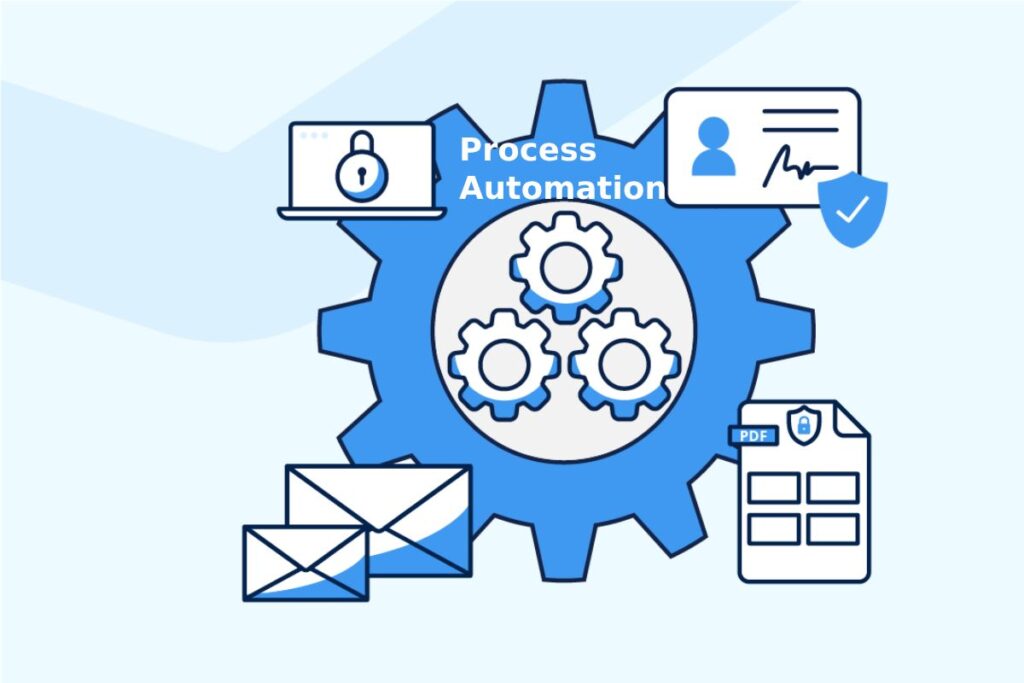Every business is looking for ways to improve efficiency and productivity. That’s where process automation comes into play. If you’re still doing things manually, you may be missing out on a key tool that could revolutionise the way you work.
From streamlining routine tasks to reducing human error, automation offers the potential to free up your time and resources for more important aspects of running a business.
In this guide, you’ll discover how to implement process automation to give your business the competitive edge it needs.
What is Process Automation?
Process automation refers to the use of technology to perform repetitive tasks that traditionally require manual input. This could include anything from sending invoices, managing customer interactions, or monitoring supply chains.
The aim is to save time, reduce costs, and ensure accuracy. Essentially, it allows your team to focus on higher-value tasks rather than getting bogged down with mundane activities.
Why your Business Needs Automation
Whether you run a small local business or a large enterprise, there are always opportunities to improve. Automation helps minimise human error, speeds up workflows, and provides you with data insights that manual processes simply can’t match. For example, automating your financial reporting can ensure accuracy and compliance.
Areas where Automation Can Help
There are several key areas where automation can make a tangible difference in your day-to-day operations:
Customer Relationship Management (CRM): By automating CRM systems, you can ensure that customer data is up-to-date and communications are seamless. This can lead to better customer service and improved client satisfaction.
Inventory Management: Automation can help track stock levels, reorder products when supplies are low, and reduce instances of overselling or stock shortages.
Fleet Management: If your business relies on a fleet of vans, incorporating gps for commercial vans into your process can enhance efficiency. It helps monitor vehicle locations, ensures that drivers follow optimal routes, and can even reduce fuel consumption.
How to Get Started with Process Automation
The first step to implementing automation is identifying repetitive tasks in your workflow that could benefit from a technology-driven approach. It’s important to start small, perhaps by automating one or two processes and then expanding as you see results.
Once you’ve identified the areas that need attention, choose the right software solutions that fit your business model. Don’t rush into automation; take the time to research, seek advice, and perhaps even trial solutions before committing.
A crucial factor in successful automation is integration. Whatever systems you choose need to seamlessly integrate with your existing business operations. Poorly integrated software can cause more harm than good, leading to inefficiencies and frustration for your team.
Measuring the Success of Automation
After implementing automation, it’s essential to measure its effectiveness. Metrics like time saved, cost reduction, and error minimisation are good indicators of whether your new systems are working.
Collecting data over time will help you fine-tune the process, ensuring that your business continues to reap the benefits.
Don’t forget to gather feedback from your team too; they’re the ones using these systems on a day-to-day basis, and their input can be invaluable.
Closing Thoughts
Process automation is a powerful tool that can transform your business operations, driving efficiency and productivity.
Whether it’s automating simple tasks like invoicing or optimising your fleet with GPS trackers, automation allows you to focus on what really matters—growing your business. Start small, monitor your results, and make adjustments as needed.

